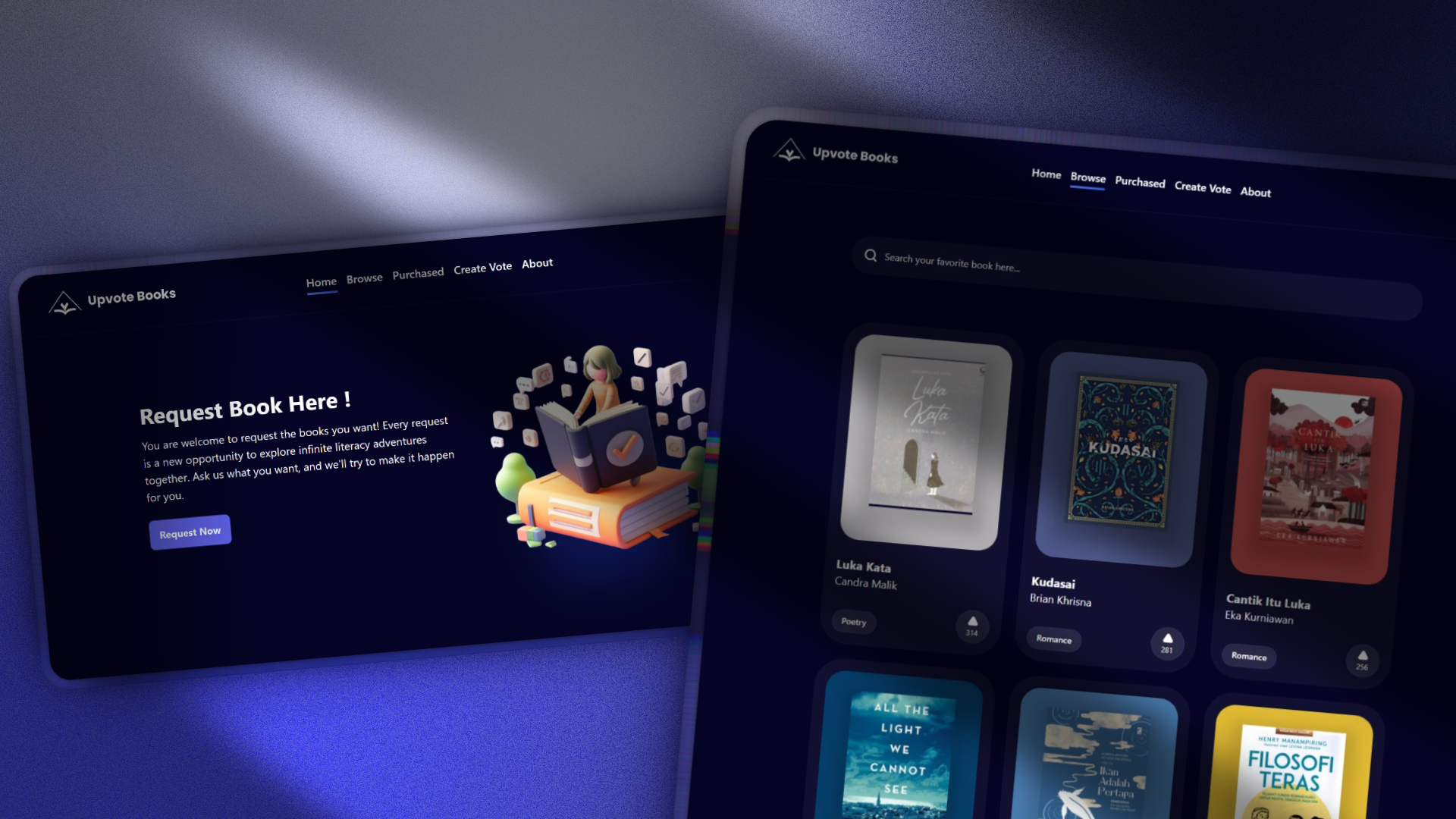Overview
Upvote Books is a web-based platform developed by me and team (Unlimited Innovation) during the MSIB Independent Study Program at Infinite Learning. The platform allows university students to propose and vote on new books for the campus library. Each month, the library staff reviews the most upvoted titles, purchases them, and adds them to the official library collection.
This initiative aims to make the process of book acquisition more transparent and student-driven, ensuring that the library's collection stays relevant to the academic and personal interests of students.
The Problem
We observed that literacy levels among students, both in schools and universities have been steadily declining. Before developing this platform, we conducted surveys with several students and found that many of them were not interested in reading books for a few key reasons.
Most students felt that books were boring and lacked visual appeal. They were used to consuming content that included images or multimedia, making traditional reading feel less engaging. Others said that the books they actually wanted to read were not available in nearby libraries. Because of this, they didn't feel motivated to visit the library at all.
On the other hand, library administrators told us that they had already tried to provide relevant and appealing books, but very few students ended up reading them after purchase. This revealed a clear disconnect between what libraries think students want and what students truly need or find engaging.
The Solution
To address this issue, we took the initiative to create a platform where students can request the books they want, and those requests can be voted on by other students. Each month, the library can review the website, check the most upvoted titles, and purchase the books with the highest demand. This system ensures that the books added to the collection truly reflect the interests of the readers.
With this approach:
- Students have a direct voice in shaping the library's collection.
- The library can prioritize books that students actually want to read.
- The reading culture can grow stronger because students are directly involved in the selection process.
Technical Implementation
Our web development team was responsible for building the main platform interface using modern front-end technologies.
- I served as both Scrum Master and Frontend Developer for the website platform, focusing on the overall UI development and task coordination.
- The website was developed using React.js with Tailwind CSS for styling, ensuring responsive and fresh design
- Collaboration across teams was managed using Agile principles, with weekly sprint reviews and regular mentor check-ins
Key Technologies
- React.js – Frontend library for building reusable and maintainable component-based user interfaces.
- Tailwind CSS – Utility-first CSS framework for creating fresh, modern designs that are easily adaptable to UI/UX team specifications.
- Firebase / REST API – Used for data storage and communication between client and server.
- Agile Methodology – Implemented through weekly sprint reviews to ensure smooth collaboration.
Lesson Learned
Working on Upvote Books was not only a technical experience but also a lesson in understanding how technology interacts with real users and institutions. Since most of the challenges we faced were not purely technical, this project helped me grow in areas that go beyond frontend development and SCRUM Methodology.
From this project, i learned that:
- Building the platform is only half the work. ensuring that users understand and are willing to adopt it is just as important.
- Introducing a new system to a traditional environment, such as a campus library, requires clear communication and patience to guide non-technical stakeholders.
- I gained a deeper understanding of how to translate technical features into benefits that make sense for users who may not be familiar with digital systems.
- Collaborating with a diverse team consisting of developers, designers, and project leaders taught me how to balance coordination and implementation under the Scrum framework.
- The project reinforced the importance of building intuitive interfaces that can be easily understood even by first-time users.
